"Armata" will not be. You can disperse
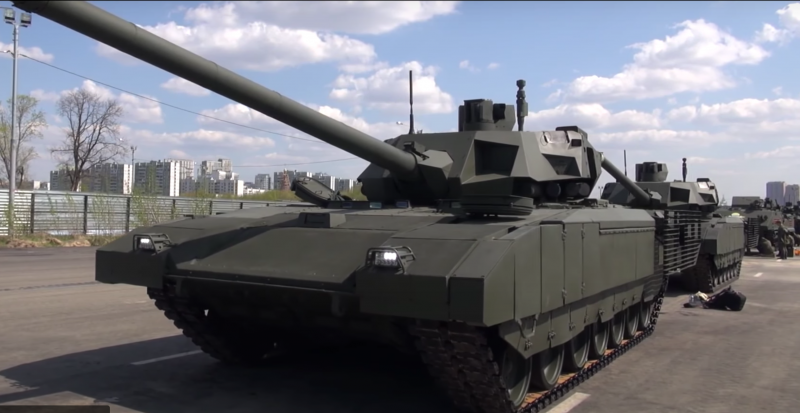
To date, "Armata" has really become a household name, denoting either long-term construction, or fruitless attempts to do at least something from scratch. Just like "Coalition", "Kurganets", "Petrel" and other "unparalleled" works.
Let's try to answer an elementary question: can the Russian army get at its disposal, say, two hundred? It's two tank regiment, that is, practically a tank division. Shock, because these breakthrough machines can try to have a significant impact on the state of affairs in the NWO.
The whole problem is that serial production of "Armata" is now impossible for many reasons. It so happened that for a tank there is no ... however, it's easier to say that there is.
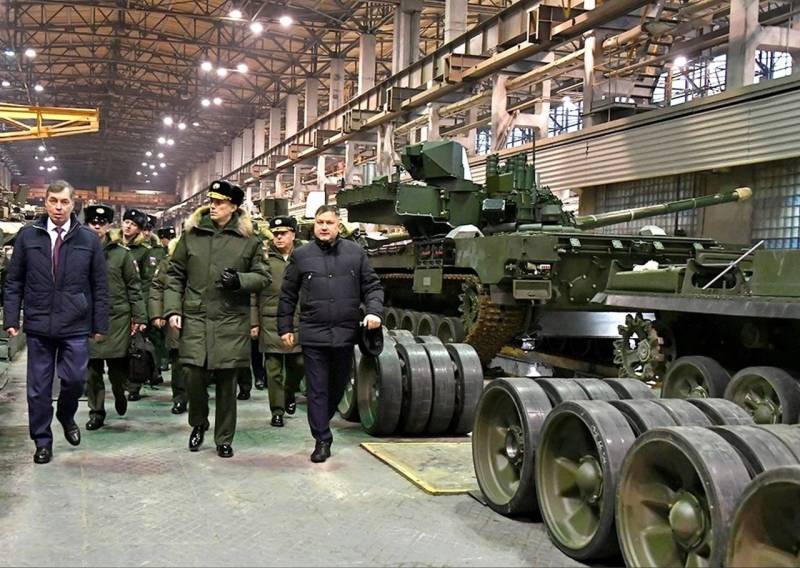
Engine
Here I will allow myself a small historical excursion. In 1931, within the walls of the Kharkov Locomotive Plant, a galaxy of talented and brilliant Soviet engineers K.F. Chelpan, T.P. Chupakhin, Ya.E. Vikhman, I.Ya. Trashutin created the V-2 tank diesel engine. Yes, the one that became the heart of the T-34, KV-1, KV-2, IS-1.
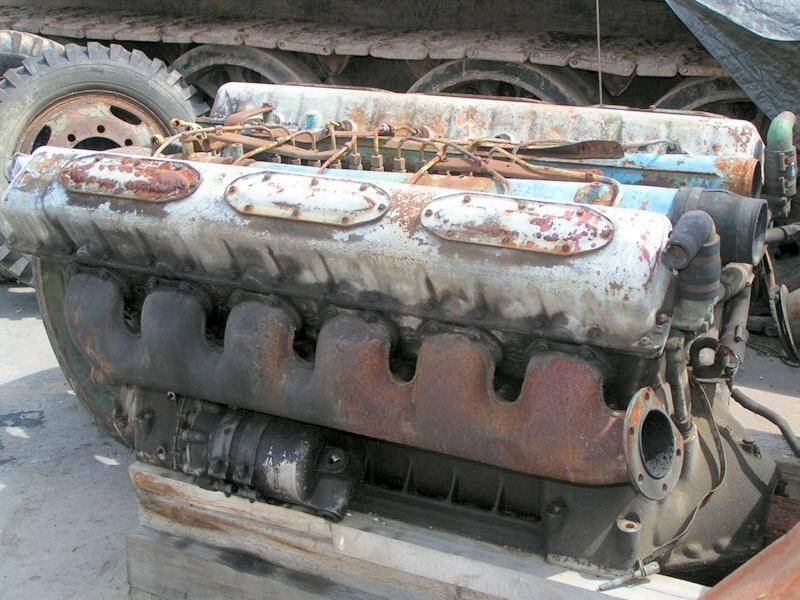
The V-2 turned out to be so successful that ALL diesel engines of Russian armored vehicles from V-84 (T-72), V-92S2F (T-72B3, T-90) to UTD-20 (BMP-1 and BMP-2) and UTD -29 (BMP-3) are further upgrades of this engine. And you can praise the V-2 for a long time, or vice versa, doubt its capabilities as a modern engine, but the fact is that almost all Russian armored vehicles are moved by this particular engine. Simple, but reliable and mastered to the screw.
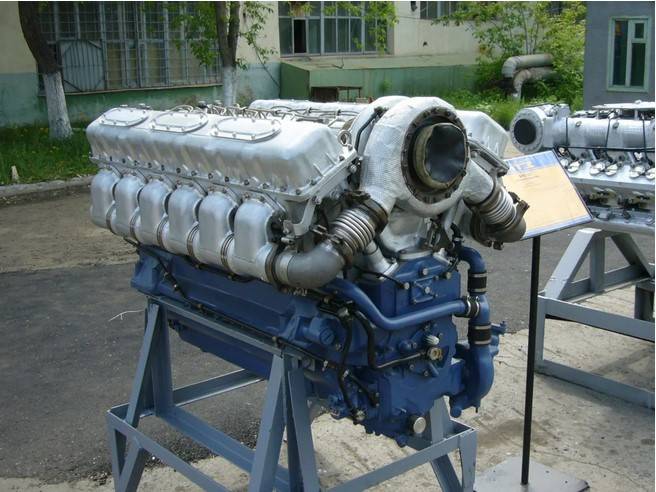
V-92S2F
The A-85-3A "Armata" engine has nothing to do with the B-2. It was created by the Transdiesel Design Bureau in the early 90s as a unit for compressor oil and gas pumping stations based on the German X-shaped Simmering SLA 16 engine, also known as the Porsche Tour 212, created as an engine for the Tiger and King Tiger ". True, the ancestor was a 16-cylinder, but this, you see, is not significant.
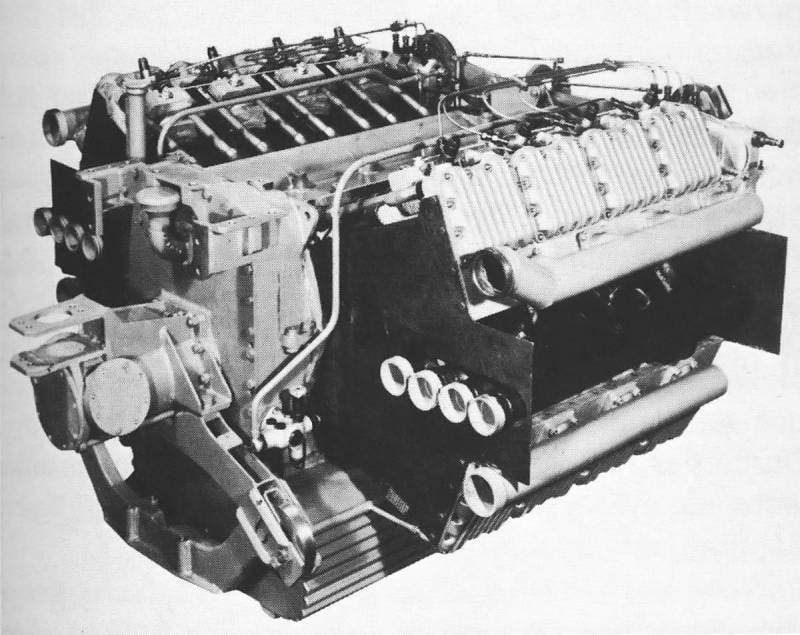
But for some reason, the A-85-3 or 12N360 did not come to court, and they decided to try it as a power plant for the promising T-95 tank, which, by the way, can be safely called the ancestor of the "Armata", since the layout was the same: a capsule on three people and an almost empty tower.
The engine was named A-85-3.
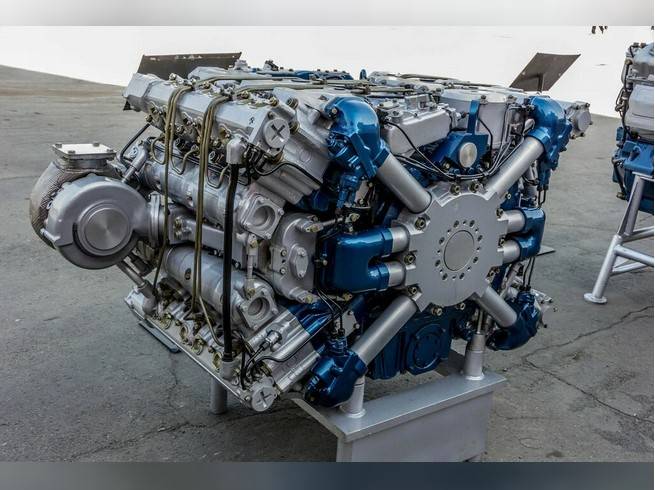
X-shaped, 12-cylinder, the declared maximum power is about 1800 hp, in normal mode about 1500 hp. Weight 1550 kg, which is 500 kg more than the B-92. Of the minuses - heavy, complex, unreliable.
The engine was repeatedly demonstrated at various exhibitions, but could not interest anyone. And the leadership of Uralvagonzavod decided to solve the issue of this engine in a very peculiar way: to take and develop a new tank for it!
And at full speed, the Armata flew into an engine trap, because the A-85-3, under which the tank was developed, was very different in size from the B-92, and in which case it was not possible to replace the A-85-3 with the old and proven B-92 possible.
By the way, this happened when in 2014 they tried to replace the A-85-3 with Yaroslavl engines. In an experimental form, but did not work out. In addition, the automatic transmission assembly with the engine is also a problem with such a replacement attempt.
As a result, they decided to leave the A-85-3A, with which the tank moves satisfactorily only under the cover of a group of technicians and engineers. As for mass production, not everything is perfect here either. A-85-3A, although not new, but for 30 years its production has not been mastered and debugged due to the lack of demand for the engine.
And this is where you can finish with the engine, because the V-92 looks like a standard of reliability and simplicity against its background. The A-85-3A, although not as old as the B-92, is still almost 15 years of difference in favor of the German prototype, but nevertheless: over the 90 years of the existence of the B-2 and its descendants, the engine has worked out to the fullest. What can not be said about the A-85.
Now, probably, it is clear why UVZ still drives the T-72 / T-80 / T-90 line and is not at all eager to “Stamp“ Armata ”? The enterprise simply does not have such a number of factory teams that will debug engines in the fields. "Raw" engines that were not really produced.
I just don't want to talk about an automatic transmission. There is no data on it, whose hands it was, but the fact that automatic transmissions on Russian cars began to appear after the sale of car factories to foreign firms says a lot. Approximately, like German automatic transmissions on Russian military tractors.
Production capacity is a separate issue. They simply don't exist. There was a program to build a new production line for "Armata", but alas. The money was allocated, and, moreover, rather big money (they say the figure is 64 billion rubles), for which workshops were erected and contracts were concluded ... with Western manufacturers of machine tools. They took the money with great pleasure and did not supply equipment, as they included sanctions. That's all: the plant seems to be there, but there are no machines.
Therefore, all that UVZ can offer is the manual assembly of the T-14 piece by piece in the semi-handicraft conditions of the experimental workshop. And first of all, this is due to the need to drive the T-90M on the assembly line in military conditions, to upgrade the T-90 to the level of the T-90MS, and not to forget about the T-72, which also needs to be upgraded.
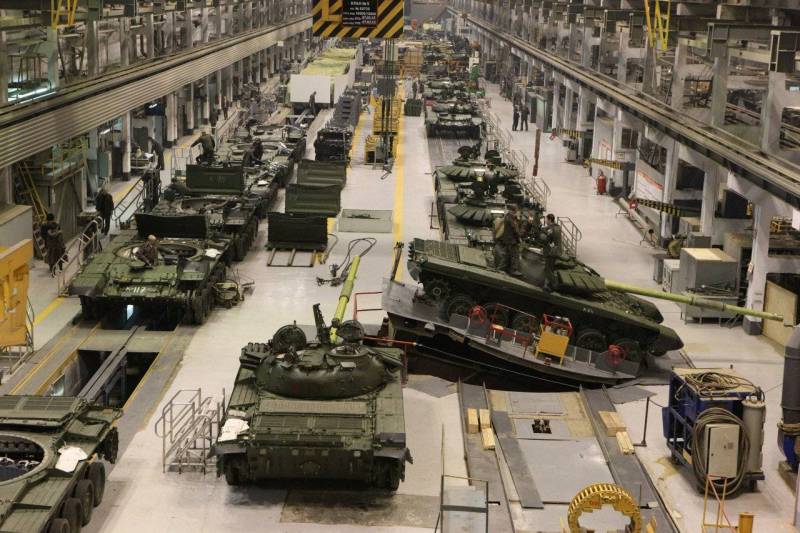
And here everything is simple: if in the USSR tanks were made at several factories, now the lion's share of the load lies with UVZ. Omsktransmash is definitely not an assistant here, the plant is engaged in somewhat different tasks.
Electronics
Yes, all these tricky and not entirely clear boxes to which screens are connected are also huge problems with this.
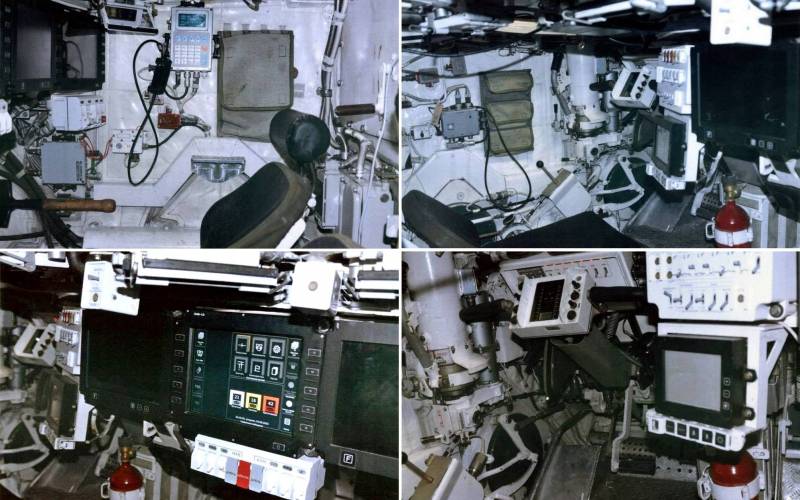
The sanctions are tightening tighter and tighter, we have already forgotten about the French thermal imagers, that with microelectronics, on the basis of which all these boxes are made, no one knows for sure, but since we do not produce anything ourselves, and for a long time, we should not expect here "breakthroughs". For all the "breakthroughs" we have lead to "Ali-express".
One can understand how difficult it is to work in such conditions for domestic manufacturers of equipment such as Shvabe, Cyclone, Kathoda, when the usual supply schemes collapsed. “We don’t need to produce anything, we’ll buy everything” - this policy, which has been going on since the beginning of the XNUMXs, has to be paid for by installing Chinese civilian (and they themselves need the military) microcircuits in military equipment, which simply do not guarantee the proper quality of the devices.
The circular Doppler radar with AFAR, which was the “chip” of the “Afghanit”, infrared HD cameras of the all-round view, ultraviolet photocathode direction finders of missiles, a digital communication station with ESU TZ and other very useful electronics are under a big question mark due to the fact that access to the element base is closed by sanctions.
And if only to microcircuits... But here, even without sanctions, such things are happening in Russia, such as, for example, the disruption of the implementation of the State Defense Order by the Volgograd plant "Red October", a manufacturer, including tank armor. Krasny Oktyabr was already declared bankrupt in 2018, its owner Dmitry Gerasimenko is on the international wanted list for embezzling a loan of $65 million and transferring 6,2 billion rubles abroad. But these dismantlings will not help the plant, the enterprise seems to have begun to work, but you yourself understand how unstable it is - work is under supervision. How many military-oriented factories in our country have not risen from their knees.
And this tank, which is not yet a tank, is being sold to us as a "miracleweapon"Directly in accordance with the training manuals of 1945. Say, now "Armata" will come, will put things in order. They say that "Armata" will issue target designations to other tanks, T-90 and T-72 right on the battlefield! Network-centric principle of warfare.
But the question immediately arises: how will Armata do this? With the help of the most modern walkie-talkie R-123? In voice mode? Well, no question ... The radar will quite allow itself to detect targets, and the radio station will allow the tank commander to issue target designation to other vehicles.
But sorry, there's something wrong here.
In the Russian army, in theory (I myself saw at exhibitions how in parts of the NMD - no information) there is such a machine as the PRP-4A "Argus", designed specifically for monitoring the area.
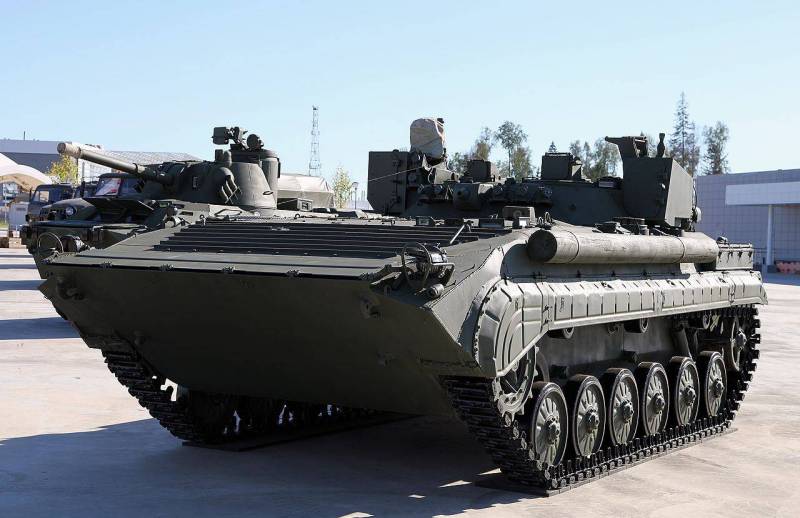
The Argus is equipped with a fairly decent 1L-120-1 radar, which can detect targets in rain, snow, in smoke screens, determine coordinates and aim artillery at them. A tank can be detected at a distance of up to 16 km, smaller targets at shorter distances, but even a group of infantry in a jeep can be confidently “taken” from 10 km. Enough to point your guns, right?
Everything, the bicycle is invented!
Here we should not forget that if the "Armata" with the help of the radar sees the enemy, then the enemy, which is typical, sees the "Armata". Imported counterparts using radar even came up with modes to reduce the power of the emitter depending on the proximity of the target in order to less unmask the source.
But we decided not to break our heads over this at all, but let it “shine” to its fullest! The fact that the tank will become just an excellent target, for some reason, no one wants to speak out on this topic. And he will. And everything that is possible will begin to fly over this tank, from 125 mm to 7,62 mm.
Such a beautiful “Armata” left, found itself with the help of a radar (of course, there is nothing like that on the other side, everyone is still running around with rifles from Garand), received a carcass of all possible calibers (the nastiest ones are 12,7-mm and 30 mm) and ... And that's it, she fought back! Because the crew will turn into three blind and deaf people, since all this electronic attachment will be taken down from the tower. Cameras, sensors, and everything else will stop working, and without them, the Armata is nothing more than an armored chest on tracks.
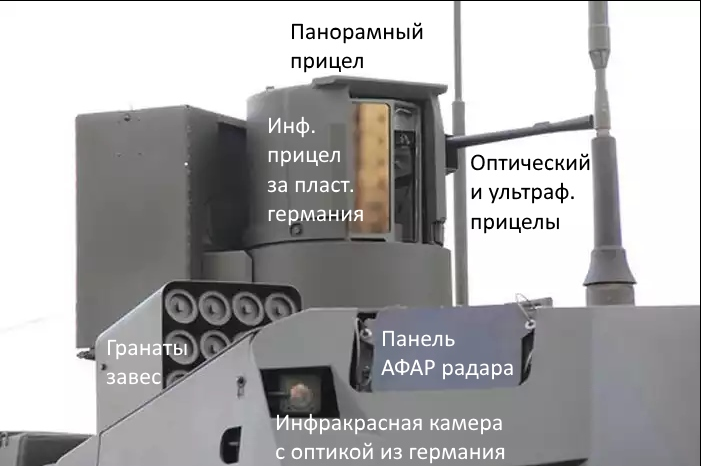
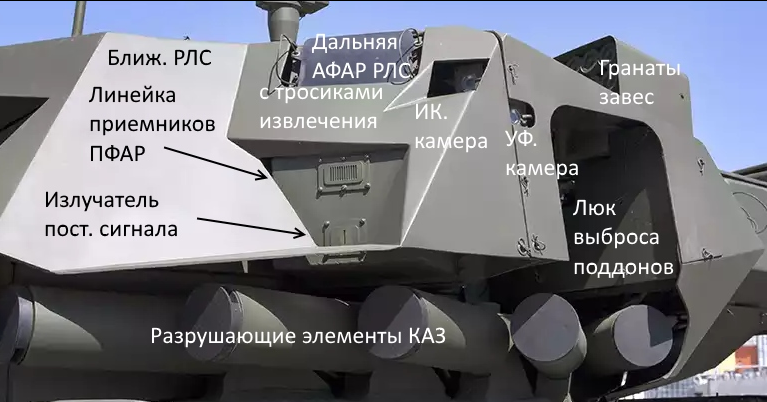
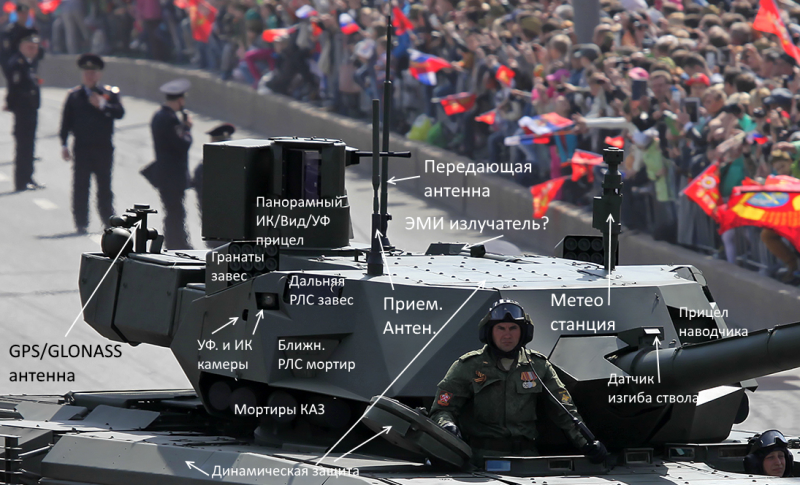
How long do you think all this splendor will last under fire? What will be left after "straightening" with automatic guns of the BMP? Machine guns? Yes, "Afghanit" shells can easily be sent to hell, the system, as our tankers say, is quite, but a smaller and no less malicious one is a question.
And here the main doubts are not that all this electronic wealth can be normally APPLY, but in the fact that later it will be possible ZAMENIT! Today, excuse me, electronic components are being removed from damaged T-72s and sent to factories, because the shortage is huge, but what about new ones?
By the way, everything is new there: engine, gearbox, electronics, rollers, transmission ... And where would you order to take it?
What is good about the T-72 and T-90, that a lot suits them.
But in our case, it was necessary to perform an act that was essentially similar to the industrialization of Stalin in the 30s: to modernize and partially re-profile about 200 enterprises that would supply components for the Armata. And yes, build an assembly shop with a conveyor. Then it would be possible to say that the tank would go into production.
And so, unfortunately, the T-14 will remain something similar to Lobaev rifles: modern, beautiful, efficient (maybe in the case of a tank), but individually and manually.
And who prevented the same rollers from Soviet tanks from leaving ...
The question arises: is it possible to solve some of the problems by simplification?
Easy. It is possible (albeit with a lot of effort) to organize the replacement of the A-85-3A with the V-92S2F, which is somewhat larger due to its layout and one and a half times weaker, naturally, the gearbox will go from the same T-90. Yes, such a tank will not run briskly, but it can be slightly lightened. Due to the fact that we do not install electronics that we cannot produce ourselves, and therefore we bought (although evil tongues in the West yell that Russian front companies bought almost 500 sets of French matrices for thermal imagers) wherever possible. But probably you should not count on this further, because it is still impossible everywhere.
What will happen in this "military version" of the T-14, you know? Yes, almost the same T-90, only slower. But it's already being released.

Therefore, watching this victory dispersed by the state media, you understand that, of course, a certain number of T-14s will definitely be sent to the front line or next to it. And in order to check in real combat conditions how truly a “miracle weapon” is, and in order to shoot the proper amount of ugly videos for the electorate. In principle, combat-ready "Armat" for a "special shock" tank company will most likely be scraped together. The main thing is to wait for a convenient moment for front-line tests, that is, offensive actions.
Why? Yes, everything is simple: so that the enemy does not get precious samples. When the army advances, all these “analogues” can easily trudge in the third echelon, shining with radars (a little, HARM will not joke), firing from cannons. More than enough for a beautiful picture. And even if something suddenly goes wrong, and another unplanned regrouping begins, the tanks can be safely removed to the rear. What is not always possible to do during defensive-retreat actions.
However, everyone already has an idea of how this happens, thanks to the personnel of the "Russian Lend-Lease" in the Kharkov region.
Therefore, I would not want the "Armata" to be in the hands of the Armed Forces of Ukraine.
And this is the alignment obtained with all that T-14 "Armata" is a very, very interesting and meaningful project with a huge future, because it is not just a new generation tank, it is a PLATFORM on which you can create new vehicles for any task. Including under network-centric wars, to which we will someday come.
But for this it was necessary to invest money in the industry. Re-profiling those same 200 factories that would produce components and spare parts for hundreds of Armats. Give the engine engineers the opportunity and time to bring this unfortunate A-85 to mind (they say they can, but a series and time are needed). What prevented this from being done - we are unlikely to know, but the fact remains that the T-14 will remain a prototype toy with no chance of mass production.
In fact, it would be very interesting to know how much the T-14 can even fight. But I doubt that this tank will actually go to the front line. It's too expensive - prototype testing in real combat. Both financially and reputationally. Although who would talk today about reputation ...
Information